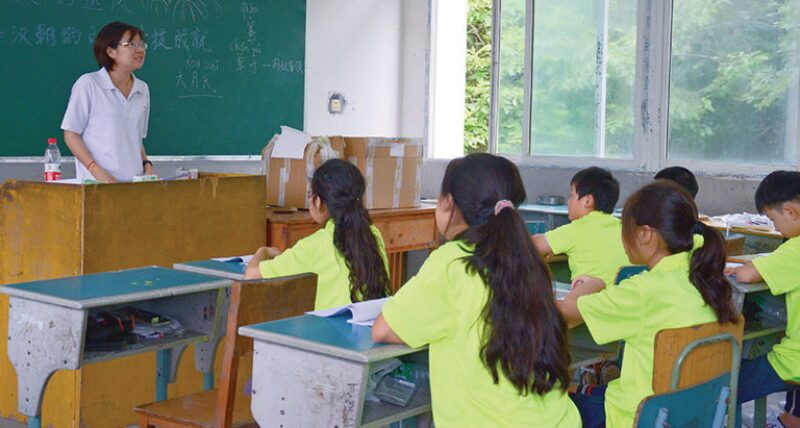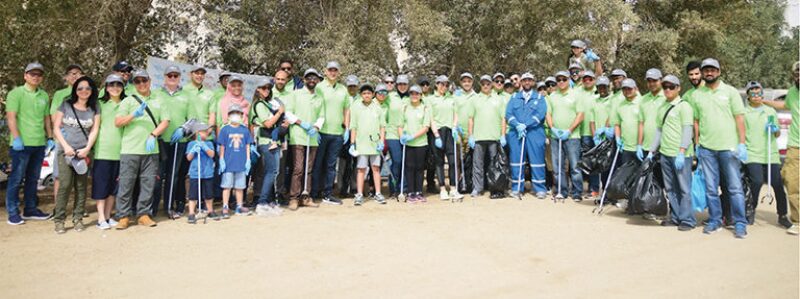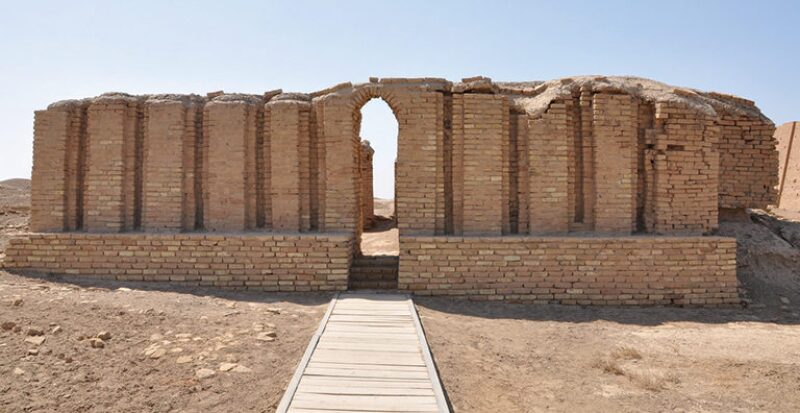For the average oil and gas technical professional who spends hours each day scrutinizing the details, it is easy to forget the big picture.
Solving the latest engineering problem comes first. Then comes solving the next one. And the problems are unique to each person and their job function. The challenges faced by drilling engineers differ from those of completion engineers, and theirs differ from those of reservoir engineers.
Then there are the men and women toiling away in the geoscience disciplines, which are also integral to exploration, development, and production. How about the newcomers: the data scientists? And nothing happens without approval from the folks in finance.
Often it can feel like the industry consists of too many moving parts, each following a path independent of the others. It can be like herding cats. It is also what makes the work interesting. Finding and extracting hydrocarbons from thousands of meters beneath the subsurface, after all, is a complicated undertaking that requires the expertise and experiences of a great many.
Working together, these professionals accomplish feats that defy impossible. Poring over that one small detail—the problem that beget several other problems—is integral in ensuring a reservoir is tapped to its potential, the company hits its production targets, and the world’s steadily growing thirst for energy is quenched.
With the same ethic, the industry has also shown it is capable of far more.
The industry is truly a global one with major operations on and off six continents. Firms double as their countries’ primary energy producer, revenue generator, and employer. Large global operators and service firms each depend on the work of tens of thousands of people, with, in some cases, the majority from outside those firms’ native countries. Business partnerships transcend borders and cultures.
Schlumberger, for example, runs its business through its offices in Houston, Paris, London, The Hague, and Willemstad, employing some 100,000 people worldwide consisting of more than 140 nationalities from 85 countries. French major Total employs just fewer than 100,000 people of 150 nationalities from 130 countries. Spain’s Repsol has a workforce of 84 different nationalities in 37 countries, with 1,800 employees working outside their home country. Of the almost 70,000 employees who work at ExxonMobil, 60% work outside the major’s native US.
The result of this rich diversity is a community of people numbering in the millions with the life experiences, knowledge, expertise, and resources to take on some of the world’s great sustainability challenges—together.
And it is happening company by company. Below is a recent sampling of the countless causes, initiatives, programs, and projects undertaken by some of the world’s biggest and best-known oil and gas firms. It provides a small glimpse of the greater, big-picture impact made by the industry.
Empowering Societies
While supplying the world with energy is one way the industry helps improve quality of life, it also makes a direct impact by putting boots on the ground in regions beset by geographical and environmental limitations.
Ensuring a basic supply of clean water is perhaps the most essential contribution one can make to a community, particularly in small villages in parts of the world where it is difficult to access. With this in mind, Italian multinational operator Eni sought to improve living conditions of communities near the Bhit, Badhra, and Kadanwari gas fields of Pakistan’s Sindh province, home of the Nara desert.
Here, residents—often women—spend a disproportionate amount of time merely collecting water, which can be found several kilometers away from their villages. Provided with the appropriate facilities, these residents can instead devote more time to other activities supporting their families and communities.
With its participation in the Bhit Rural Sustainability Program, Eni worked with local nongovernmental organizations (NGOs) to construct wells, hand pumps, and rainwater collection tanks to support up to 5,000 residents. In the Kadanwari area, Eni and a local NGO supported the residents and their livestock by building 11 solar-powered milking machines, 11 hand pumps, and two reverse osmosis systems. Near the coast, the firm and another NGO built and installed 42 hand pumps and three drinking water storage tanks for around 200 families.
Bolstering the economic viability of villages near the lush tropical rainforests of Malaysia’s Imbak Canyon Conservation Area, national oil company Petronas helped establish a rural homestay operation to accommodate tourists trekking in the region. Through the Planting Tomorrow community development program, residents were given the supplies and guidance to upgrade infrastructure, build lodging, and manage day-to-day homestay activities.
The project included the installation of a gravity-driven water system to supply clean water to 700 residents in Imbak Village. Overall, Planting Tomorrow has backed the installation of at least 10 water gravity systems in East Malaysia.
In Bangladesh’s Greater Sylhet region, Chevron is working to stimulate economic development in communities around its operations by contributing to the Bangladesh Partnership Initiative. Its Jibika Project, for example, involves collaboration with more than 100 village development organizations to offer enterprise and business management training. The program promotes income generation for 18,000 residents by establishing 20 producer groups built on the rearing of goats, ducks, and cattle as well as the cultivation of vegetables.
A major cause supported by ExxonMobil is the global fight against malaria, “a disease that still leads to an estimated 445,000 deaths annually despite being preventable, treatable, and curable,” the company says. Since 2000, ExxonMobil has contributed $170 million to the fight and provided preventative assistance to some 125 million people throughout Africa and Asia.
This has resulted in the distribution of 14.4 million bed nets, 4.7 million doses of antimalarial drugs, and 3 million rapid diagnostic kits. Approximately 640,000 healthcare workers and counselors have been trained to help prevent, diagnose, and treat the disease, and more than 2.5 million community health sessions have been held.
ExxonMobil has also backed a proof-of-concept project led by the Baylor College of Medicine in Houston that uses satellite-imaging technology to pinpoint mosquito breeding habitats in Texas. The goal is to find out if remote sensing can be a quick and inexpensive method deployed globally to halt the spread of the disease.
Elsewhere on the continent, Angola remains one of the most heavily landmine-contaminated countries in the world, as it continues to deal with the effects of a nearly three-decade civil war that ended in 2002.
But funding for removal has fallen over the last decade, according to statistics from London-based think tank Chatham House. Norway’s Equinor is doing its part to assist the ongoing recovery by supporting a removal project in Malanje province. On a mission to reclaim the countryside for the people, the company and other organizations have demined around 4 million cu m of land.
Helping Educate the World
Maintaining a global supply of qualified technical personnel is one of the industry’s biggest challenges and an area where it is equipped to make the biggest impact. This is true for the regions where oil and gas companies both run their businesses and operate. It is an opportunity to further improve quality of life by fostering learning, whether it is during early childhood or early career.
Employees of Schlumberger are tapping into their scientific and technological expertise to advance STEM education via the Schlumberger Excellence in Education Development (SEED) program. For the more than 20 years, SEED has linked underserved communities with the technology needed to create interactive learning environments centered on some of the society’s most critical emerging disciplines.
With a particular focus on robotics, computer science, and energy, the program holds camps and workshops while contributing to the professional development of teachers. As of 2017, SEED had put on more 143 workshops consisting of 17,689 students, 1,316 teachers, and 1,008 volunteers.
In recent years, SEED has made coding a priority, introducing the subject to children as young as 6 years old with platforms such as SCRATCH, an online community that allows kids to program their own interactive stories, games, and animations. Consultants in the program recently collaborated with educators in Ecuador to host a robotics workshop. SEED has worked with the Nigerian Academy of Science to encourage interest in STEM by making available practical problem-solving activities. The organization has also provided workshops on electronic circuits, electromagnetism, and wind power to students in Curacao.
In its native Australia, Woodside Energy has overseen a similar program, the Woodside Australia Science Project, known as WASP, designed to stoke student curiosity in Earth and environmental sciences. In 2017, the Perth-based independent’s STEM in Schools initiative involved 178 employees delivering hands-on activities to more than 7,000 secondary students in Western Australia. Students can explore topics through online quizzes and animations, including an iPad app.
For a decade, Halliburton has maintained a relationship with the Hope Primary School in China’s Sichuan province, which was devastated during a massive earthquake in 2008. During the rebuilding efforts, volunteers contributed air conditioning units and school supplies. Art, music, physical education, and English courses have since been added, and the learning environment has been made livelier with the inclusion of 3D animation programs, musical instruments such as harmonicas, and English-language audio books.

British major BP is working alongside Mumbai-based NGOs Door Step School and Masoom to provide STEM workshops for underprivileged children who have limited access to educational resources including books. About 850 students participated in the program in 2017.
For those embarking on their careers, BP in Oman is helping nurture technical talent by establishing a multiyear training program in disciplines such as mechanical and electrical engineering. Participants gain real-world experience in the field with the goal of becoming contributors to the massive Khazzan gas project, which is expected to supply around 40% of the country’s gas demand. At least 70 Omanis have graduated from the program and joined operations.
Chevron’s participation in the Bangladesh Partnership Initiative also supports workforce development in Bangladesh’s Greater Sylhet region. The initiative’s Uttoron Project provided vocational training to 475 local youths, of which 80% graduated and secured employment.
Environmental, Cultural Stewardship
Thanks to advancements in technology and knowhow, oil and gas companies have made strides in curbing their environmental impacts. However, being a steward of the Earth requires more than just reducing CO2 emissions. These firms are going the extra mile to contribute to the preservation of some of the world’s most fascinating habitats and culturally significant locales.
Rich in geographic diversity, Mexico consists of vast deserts in the north and lush, green rainforests in the south. One of the country’s most scenic attractions is the Lacandon Jungle, where Pemex recently funded a project to protect a portion of the Grijalva-Usumacinta basin. Carried out by nonprofit organization Natura Mexicana, three conservation stations were set up along the Lacantun River for monitoring, research, education, and restoration purposes.
Work involved a thorough evaluation of the region’s ecosystems. Using trap cameras, a wide range of species were observed on the ground, including jaguars, white-lipped boars, temazate deer, and swamp crocodiles. The organization also studied aquatic ecosystems in the Lacantun River and its streams, gleaning insights on organism diversity and population growth among invasive species.
Rescue and protection activities were undertaken for the scarlet macaw, a large, colorful parrot native to Central and South America. Injured adults and young were administered treatment in captivity until they were ready for release into the wild.
ConocoPhillips recently collaborated with the Smithsonian Conservation Biology Institute’s Migratory Bird Center to map migratory bird patterns in the Western Hemisphere. The project sought to gain a better understanding of the survival challenges faced by the Common Nighthawk—an at-risk species whose population has plummeted during the last five decades—while gleaning insight into broader issues in the ecosystem.

Advanced tracking technologies were used to follow six nighthawks as they traveled 20000 km/year between their breeding grounds in northern Alberta in Canada and winter homes in Brazil’s tropical rainforests. Satellite transmitters weighing 3.5 grams apiece, or just more than a penny, were affixed to the birds and regularly collected location data.
While researchers initially thought the nighthawk would migrate southwardly over Mexico, they found the birds took an entirely different route, crossing the Gulf of Mexico with some landward guidance via Florida and Cuba. In the spring, they returned within 1 km of where they were originally tagged. These findings, along with additional research, will be used to determine how to better conserve the species.
On Haimen Island in China’s Fujian province, Saudi Aramco recently took part in a conservation project targeting the region’s biodiverse swamps through planting mangroves—small trees with complex root systems that serve to protect coastal wetlands and their inhabitants amid warm, salty conditions. Supporting the China Mangrove Conservation Network, Aramco adopted its very own portion of land on the island to oversee. Activity began in 2018 and ran through February.
During the initiative’s first few months, volunteers and local residents planted about half of the 22,000 mangroves first targeted for the entire island. Activity included the removal of invasive species and marine litter.
Baker Hughes, a GE company, and Kuwait Oil Company teamed last year to eliminate a half ton of garbage from Mangaf Beach, south of Kuwait City on the Persian Gulf. Part of the BHGE Volunteer Beach Cleaning Campaign, the day-long event involved 85 employees, including leadership from both firms. GE has sponsored similar cleanups in the past, both in Kuwait and Algeria. On Kuwait’s Messilla beach, volunteers previously cleared as much as 5 cu m of trash for each unified sweep of the area. In Algiers, some 150 volunteers previously teamed to collect 50 bags of refuse weighing 1500 kg.

Almost as important as maintaining the planet’s life-sustaining ecosystems is preserving the cultural heritage of regions that humanity’s early innovators called home. And, as it so happens, some of world’s archeological goldmines double as its richest oil provinces.
Since 2010, Royal Dutch Shell has been operator of Iraq’s Majnoon field, which lies in close proximity to Mesopotamia, the “Cradle of Civilization.” Here, Shell is using advancements in petroleum technology to produce oil and gas more efficiently. Thousands of years ago, our ancestors in the region made humanity’s first technological breakthrough: the wheel. But longstanding social conflict in the region has jeopardized preservation of artifacts that lend insight into a once thriving society.

Near Majnoon operations are the remnants of Charax Spasinou, a never-before surveyed ancient port on the Persian Gulf founded by Alexander the Great around 300 BC. As Shell entered the area, it ensured safe archeological and oil operations by undertaking a program to remove still-live ammunition remaining from the Iran-Iraq war that took place decades earlier. The firm collaborated with Qahtan al-Abeed, archeologist and director of the Basra Museum, to prevent disturbance of historic sites and collect artifacts it happened to encounter, which would be sent to the museum.
While al-Abeed told Shell he was initially worried about the presence of oil producers in the region, he found that “sites inside oilfield areas are generally better protected than those outside.”

